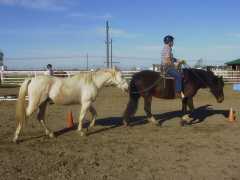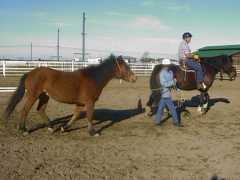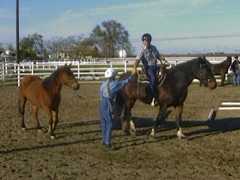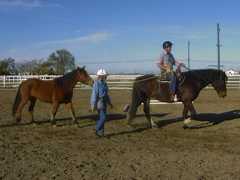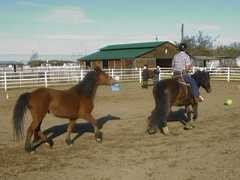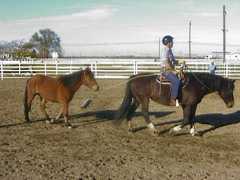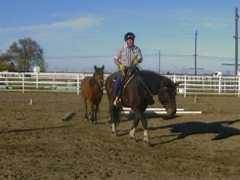| Once the ponied horse is relaxed and looking where she is going we can start asking her to navigate simple obstacles. | |
Weaving cones and other objects
|
Leading through cavaletti lanes
|
|
Important Note: If you take on the project of developing an untrained horse, everybody will want to give you advice. Don't act on any advice, including the ideas offered in this site, unless it makes sense to you and fits your individual situation. Your abilities and the sensitivities of your horse(s) may differ from the examples given. Be alert and rational with your actions so neither you nor your horse will get hurt. This information is offered as illustrations of what we do and the reader must apply common sense since he or she is solely responsible for his or her actions. Happy trails!Press "Back" to return to the page that brought you hereGo to Case Study SectionReturn to Training SectionReturn to Wild Horse MentorsReturn to KBR World of Wild Horses and BurrosGo To
| |

